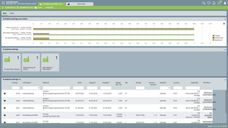Amersham Biosciences Introduces Ettan DIGE Platform for 2-D Fluorescence Difference Gel Electrophoresis
A novel method for differential protein expression analysis
Advertisement
PISCATAWAY, NJ – April 23, 2002 - Amersham Biosciences, the Life Sciences business of Amersham plc has introduced Ettan TM DIGE, a new platform for its unique, patented technology for 2-Dimensional Fluorescence Difference gel electrophoresis (2-D DIGE). 2-D DIGE technology is already used by some 50 leading pharmaceutical and academic laboratories world-wide through an early-access program. With Ettan DIGE, researchers can be confident that protein expression differences are real, biological differences, leading to more reliable and rapid development of disease and drug models.
Ettan DIGE is a unique system that brings an as yet unrivalled statistical confidence and level of reliability to 2-D electrophoresis results, as each protein spot has its own internal standard. Ettan DIGE offers proteomics researchers a critical advantage as it enables multiplexing, the separation of multiple samples on a single gel. Multiplexing increases the throughput, reproducibility, and accuracy of protein expression studies. Researchers can now compare, on the same gel, protein samples from normal and diseased tissues, together with drug-treated tissues. This allows detection of the differential expression of proteins in particular disease states, and monitoring of the effects of existing or new drug candidates.
The Ettan DIGE system consists of three key components: Amersham Biosciences' proprietary cyanine dye chemistry, CyDyeTM DIGE fluors (exclusively licensed to Amersham Biosciences from Carnegie Mellon University), TyphoonTM variable-mode gel imager, and DeCyder TM differential analysis software.
In Ettan DIGE, up to three fluorescently labelled protein samples can be loaded onto the same electrophoresis gel. After 2-D electrophoresis, the gel is scanned using the highly sensitive Typhoon imager. DeCyder software can be used to automatically locate and analyze the protein spots, yielding a very sensitive and accurate measure of differential protein expression. DeCyder derives statistical data intra-gel rather than inter-gel, enabling routine detection of down to less than ten percent differences in expression with over ninety-five percent confidence, within minutes.
























































